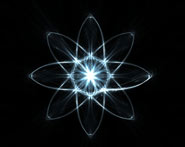


 الفيزياء الكلاسيكية
الفيزياء الكلاسيكية
 الكهربائية والمغناطيسية
الكهربائية والمغناطيسية
 علم البصريات
علم البصريات
 الفيزياء الحديثة
الفيزياء الحديثة
 النظرية النسبية
النظرية النسبية
 الفيزياء النووية
الفيزياء النووية
 فيزياء الحالة الصلبة
فيزياء الحالة الصلبة
 الليزر
الليزر
 علم الفلك
علم الفلك
 المجموعة الشمسية
المجموعة الشمسية
 الطاقة البديلة
الطاقة البديلة
 الفيزياء والعلوم الأخرى
الفيزياء والعلوم الأخرى
 مواضيع عامة في الفيزياء
مواضيع عامة في الفيزياء|
أقرأ أيضاً
التاريخ: 15-1-2016
التاريخ: 10-1-2016
التاريخ: 2024-03-18
التاريخ: 2-1-2021
|
The above, then, are some of the effects of interference obtained by adding the various waves. But there are a number of other examples, and even though we do not understand the fundamental mechanism yet, we will someday, and we can understand even now how the interference occurs. For example, when a light wave hits a surface of a material with an index n, let us say at normal incidence, some of the light is reflected. The reason for the reflection we are not in a position to understand right now. But suppose we know that some of the light is reflected both on entering and leaving a refracting medium. Then, if we look at the reflection of a light source in a thin film, we see the sum of two waves; if the thicknesses are small enough, these two waves will produce an interference, either constructive or destructive, depending on the signs of the phases. It might be, for instance, that for red light, we get an enhanced reflection, but for blue light, which has a different wavelength, perhaps we get a destructively interfering reflection, so that we see a bright red reflection. If we change the thickness, i.e., if we look at another place where the film is thicker, it may be reversed, the red interfering and the blue not, so it is bright blue, or green, or yellow, or whatnot. So, we see colors when we look at thin films and the colors change if we look at different angles, because we can appreciate that the timings are different at different angles. Thus, we suddenly appreciate another hundred thousand situations involving the colors that we see on oil films, soap bubbles, etc. at different angles. But the principle is all the same: we are only adding waves at different phases.
As another important application of diffraction, we may mention the following. We used a grating and we saw the diffracted image on the screen. If we had used monochromatic light, it would have been at a certain specific place. Then there were various higher-order images also. From the positions of the images, we could tell how far apart the lines on the grating were, if we knew the wavelength of the light. From the difference in intensity of the various images, we could find out the shape of the grating scratches, whether the grating was made of wires, sawtooth notches, or whatever, without being able to see them. This principle is used to discover the positions of the atoms in a crystal. The only complication is that a crystal is three-dimensional; it is a repeating three-dimensional array of atoms. We cannot use ordinary light, because we must use something whose wavelength is less than the space between the atoms or we get no effect; so, we must use radiation of very short wavelength, i.e., x-rays. So, by shining x-rays into a crystal and by noticing how intense is the reflection in the various orders, we can determine the arrangement of the atoms inside without ever being able to see them with the eye! It is in this way that we know the arrangement of the atoms in various substances, which permitted us to draw those pictures in the first chapter, showing the arrangement of atoms in salt, and so on. We shall later come back to this subject and discuss it in more detail, and therefore we say no more about this most remarkable idea at present.



|
|
|
|
كل ما تود معرفته عن أهم فيتامين لسلامة الدماغ والأعصاب
|
|
|
|
|
|
|
ماذا سيحصل للأرض إذا تغير شكل نواتها؟
|
|
|
|
|
|
|
جامعة الكفيل تناقش تحضيراتها لإطلاق مؤتمرها العلمي الدولي السادس
|
|
|